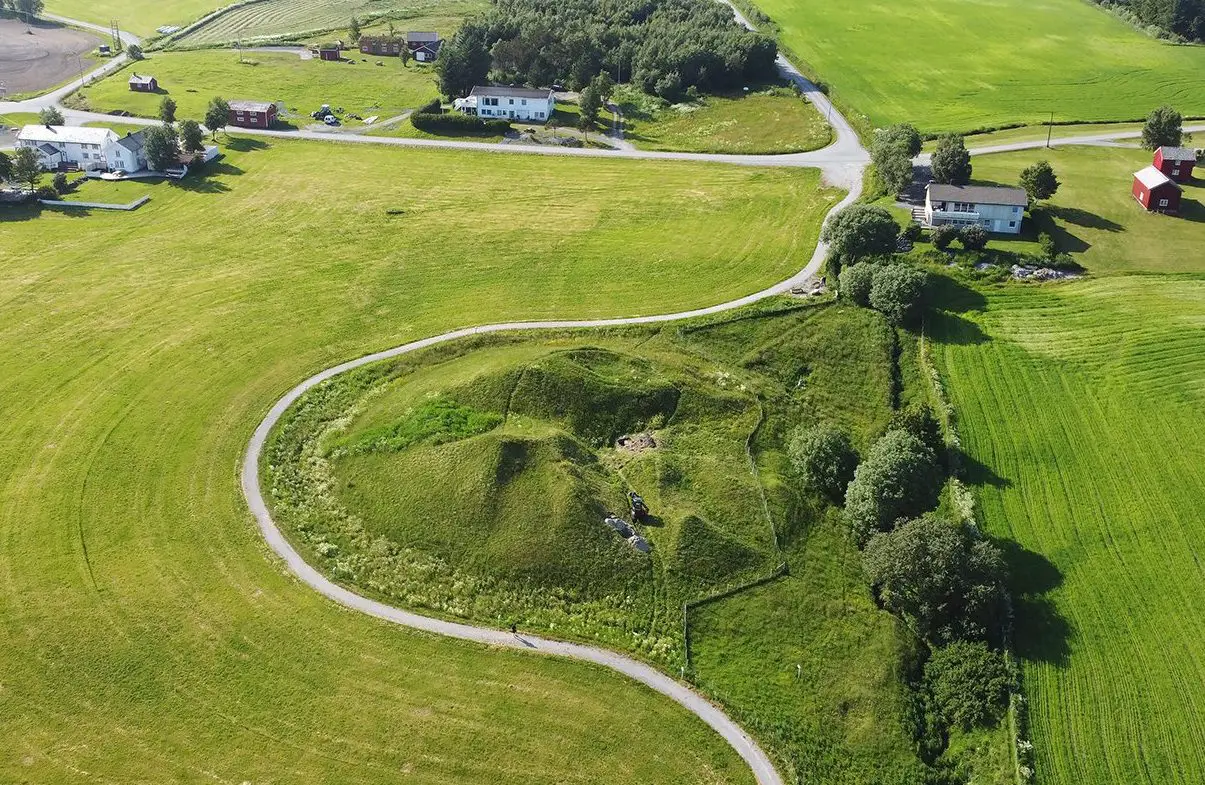During 2023, archaeologists conducted an investigation at Leka in the northern region of Trøndelag County, Norway, revealing the presence of a ship burial within the Herlaugshaugen burial mound.
The burial mound has a diameter of over 60 metres and was thought to be the ultimate resting site of King Herlaug, a Norse king who, as legend has it, opted to be interred alive along with eleven companions instead of yielding or fleeing from the advancing King Harald.
Excavations of the mound were conducted in the late 1700s, yielding reports of discoveries such as iron rivets, a bronze cauldron, and a seated skeleton accompanied by a sword. However, conflicting narratives arise, and both the tangible evidence and human remains have since disappeared without a trace.
“Unfortunately, these finds disappeared in the early 1920s. The skeleton was exhibited for a while at Trondheim Cathedral School as King Herlaug, but no one knows what happened to it. All the other finds have also disappeared. It is said that the bronze cauldron was melted down and made into shoe buckles,” said Geir Grønnesby from the Norwegian University of Science and Technology (NTNU) University Museum.
A recent study has revealed that the mound contains the remains of a ship burial which actually dates from around AD 700 during the Merovingian period, predating the Viking Age and also King Herlaug by centuries.
The discovery has also pushed back the accepted tradition of ship burials in Norway and aligns with early ship burials like those at Vendel and Valsgärde in Sweden, known for their ornate weapons and elaborate burials.
“Moreover, the burial mound itself symbolises power and affluence, not derived from farming in Ytre Namdalen. It’s plausible that the region’s inhabitants engaged in extensive trade, possibly across vast distances,” added Lars Forseth, an archaeologist from Trøndelag County Authority.
Header Image Credit : Hanne Bryn
Please take a second to click on the advert below. That one click helps to fund our journalism and enables us to continue providing articles on our platform completely FREE.







